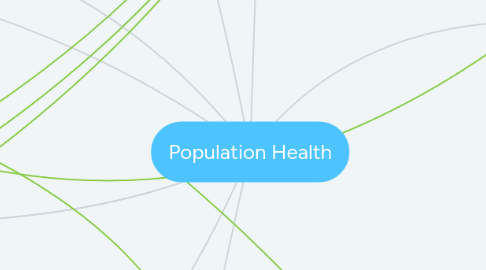
1. Social/Behavioral/Environmental
2. Goals
2.1. Quality (Outcomes)
2.2. Low Cost/Resource
2.3. Equitable Access
2.4. Coordinated
2.5. Patient Satisfaction
2.6. Evidence Based
2.7. Transparent
3. Domains
3.1. Health System
3.2. Law/Administration
3.3. Process/Design
3.4. Interpersonal
4. System Models
4.1. Accountable Care Orgnizations
4.2. Disease Management
4.3. Chronic Care Management
4.4. Patient Centered Medical Homes
5. DNP Roles
5.1. Change Agent
5.2. Expert Clinician
5.3. Evidence Based Practice Expert
5.4. Systems Thinker
5.5. Interdisciplinary Team Leader
5.6. Educator
5.7. Process Improver
5.8. Policy Advocate
5.9. Ethical Role Model
5.10. Technology Innovator/Utilizer
6. DNP Essentials
6.1. I. Scientific Underpinnings for Practice
6.2. II. Organizational and Systems Leadership for Quality Improvement and Systems Thinking
6.3. III. Clinical Scholarship and Analytical Methods for Evidence Based Practice
6.4. IV. Information Systems/Technology and Patient Care Technology for the Improvement and Transformation of Health Care
6.5. V. Health Care Policy for Advocacy in Health Care
6.6. VI. Interprofessional Collaboration of Improving Patient and Population Health Outcomes
6.7. VII. Clinical Prevention and Population Health for Improving Patient and Population Health Outcomes
6.8. VIII. Advanced Nursing Practice
7. Change Process
7.1. Community Assessment
7.1.1. Health Disparities
7.1.1.1. Social
7.1.1.1.1. Support
7.1.1.1.2. Education
7.1.1.2. Economic
7.1.1.2.1. Employment
7.1.1.2.2. Familial means
7.1.1.3. Environment
7.1.1.3.1. Living conditions
7.1.1.3.2. Community Infrastructure
7.1.1.3.3. Stress
7.1.1.4. Personal
7.1.1.4.1. Age
7.1.1.4.2. Race/Ethnicity
7.1.1.4.3. Citizenship
7.1.1.4.4. Ability/Disability
7.1.1.4.5. Religion
7.2. Theories of Change
7.2.1. Social Ecological Model
7.2.2. Transtheoretical Model of Change
7.2.3. Health Belief Model
7.2.4. Social Cognitive Theory
7.3. Program Development
7.3.1. Stakeholders/Participants
7.3.2. Goals
7.3.3. Setting
7.3.4. Intended Change
7.3.5. Methods
7.3.6. Measurement
7.4. Barriers
7.4.1. Inertia
7.4.2. Time
7.4.3. Payment/Insurance Models
7.4.4. Continuity Across Systems
7.4.5. Technology
8. Activities
8.1. Education
8.2. Policy Development
8.3. Practice Improvement
8.4. Program Development
8.5. Health Surveillance
8.6. Prevention
8.6.1. Primary
8.6.2. Secondary
8.6.3. Tertiary

